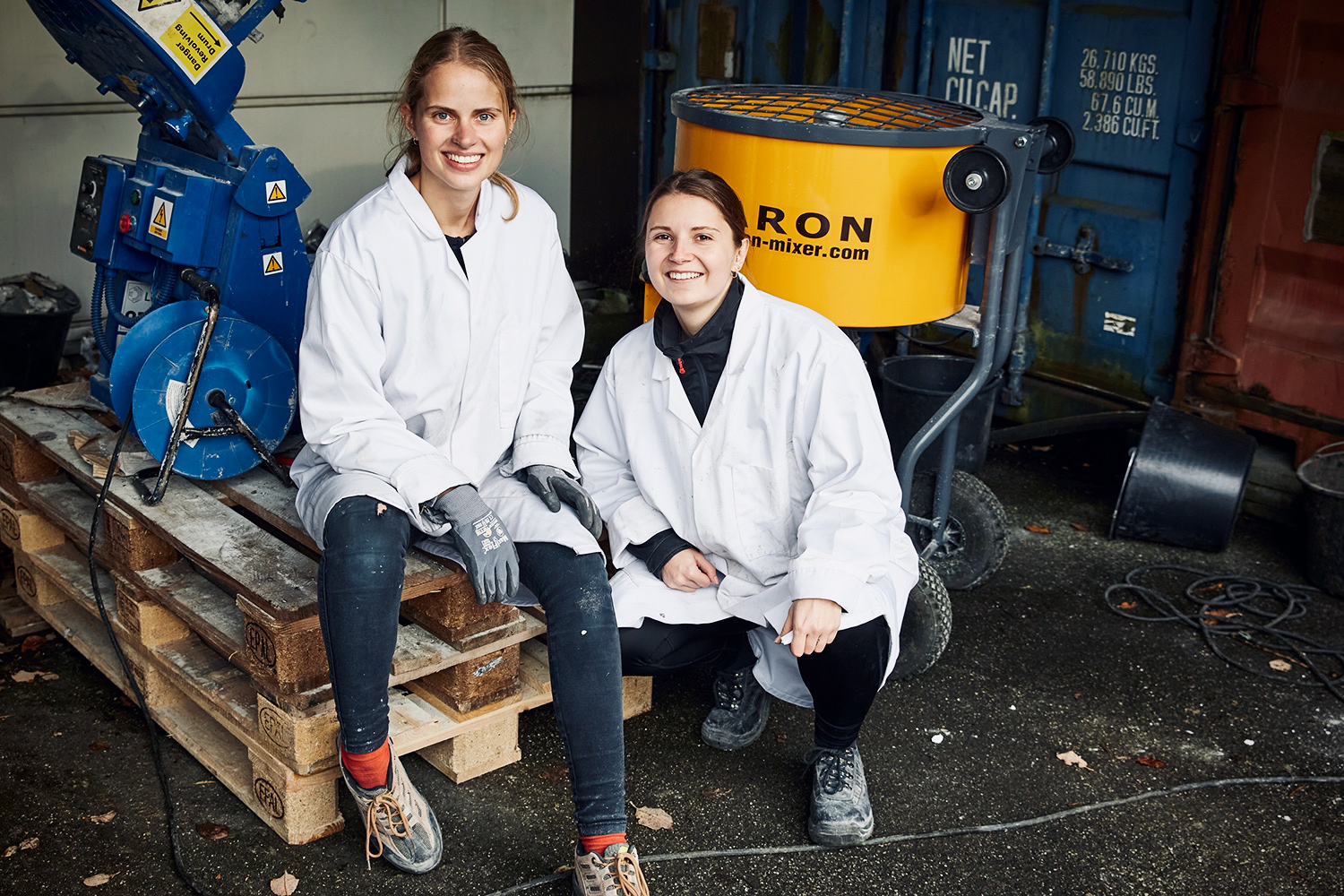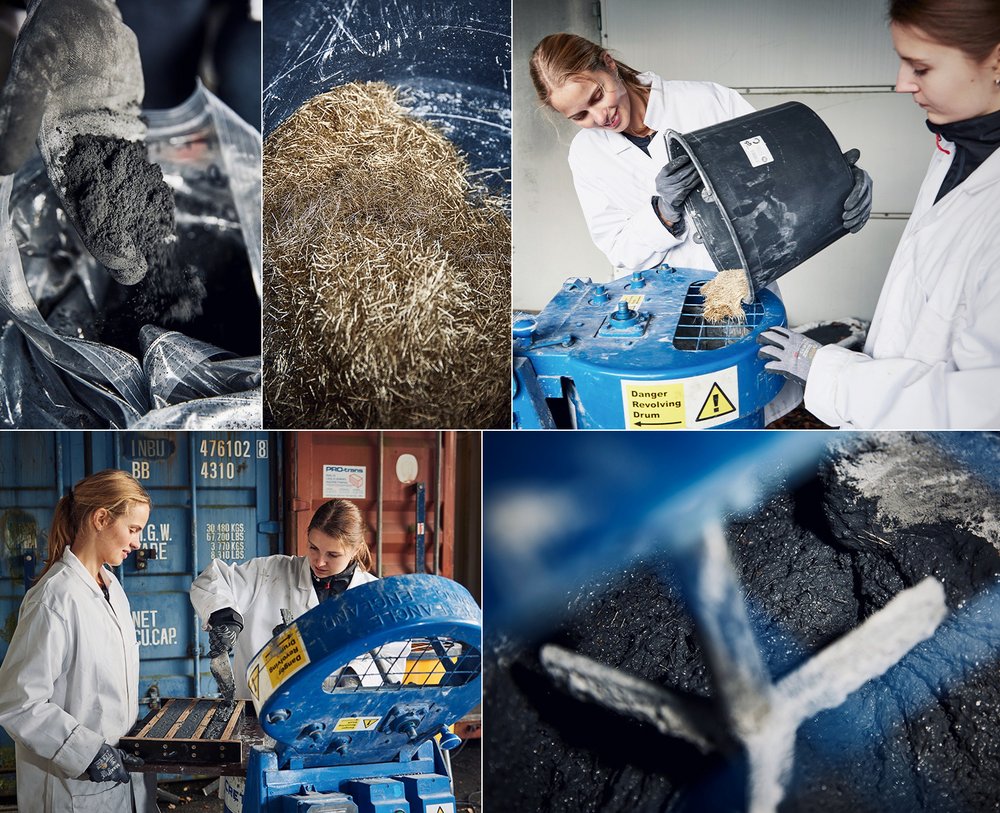Concrete scholarships for engineering students: developing ultra-strong terrorism protection
Two MSc in engineering students who are developing a special kind of concrete for terrorism protection have each received a scholarship for a study trip to Switzerland.

Terrorism protection is here to stay, and it has become an inevitable part of the urban space. It stands, visible or less visible, on the streets and in playgrounds; clumsy concrete elements or cylindrical bollards that remind us of their function.
An obvious development in this context is to combine functionality with aesthetics to integrate terrorism protection into the urban space and make its primary function less visible.
Two engineering students from Aarhus University, Mathilde Bjerregaard and Lena Fallesen, have taken up the challenge. The two students are on the third semester of their Master's degree in civil and architectural engineering, and they are investigating the use of carbon and steel fibre-reinforced high-strength concrete, UHPFRC (Ultra-High Performance Fibre Reinforced Concrete) in terrorism protection as a pre-project to their Master's thesis.
"High-strength concrete contains reinforcement in the form of steel fibres, and we also mix in carbon-nanofibres to give it additional strength. We’re trying to find out whether it’s possible to form slimmer constructions without compromising on strength," says Mathilde Bjerregaard.
A crucial study trip
The two engineering students have each been awarded a scholarship of DKK 5,000 from the Danish Concrete Society (DBF), which they applied for to pay for a study trip to Switzerland.
(The article continues below the picture)

"Carbon and steel fibre-reinforced high-strength concrete provides completely new possibilities within aesthetics and architecture in constructions, which we hope will be used in the future," says Mathilde Bjerregaard. Photo: Ida Jensen, AU Photo.
This year, the study trip was postponed due to the coronavirus pandemic, but they hope to be able to go to March 2021. For four weeks, they will be affiliated with the University of Applied Sciences and Arts of Southern Switzerland (SUPSI) in the city of Lugano, where they will learn about the properties and applications of UHPFRC.
"Going to Switzerland is crucial for our project, because here we will be able to carry out shock-test experiments on the concrete and we will be introduced to a system used in the car industry to conduct crash tests," says Mathilde Bjerregaard.
Experience from a cement mixer
With a kilo price of approx. DKK 3,000, carbon nanofibres are expensive. They also have a tendency to clump together when they are stirred into the concrete.
Mathilde and Lena have experienced this over the past month, while they have been standing beside a cement mixer at the university's experimental laboratory in the Deep Tech Experimental Hub at Skejby.
They have experimented with different doses of carbon nanofibres in steel-fibre-reinforced concrete mixtures, which they have moulded into small models for experiments and trials.
(The article continues below the picture)

Ultra-High Performance Fiber Reinforced Concrete contains both carbon-nanofibres and steel fibres in the cement mix. The hope is slimmer constructions without compromising on strength. Photos: Ida Jensen, AU Photo.
In collaboration with the Danish company Hi-Con, the two students are finding the best mixing proportions and method to distribute carbon nanofibres in the concrete mixture.
"Fibre-reinforced concrete is still a niche and there’s not yet developed a standard, a common calculation standard, with the material, but with the knowledge we gain from our studies, we’ll be able to take it one step further," says Lena Fallesen.
Mathilde Bjerregaard adds:
"We believe that there is great potential in this type of UHPFRC to make terrorism protection less visible in the urban space by making it slimmer and smaller. For example we could make bollards more sculptural, such as figures in a playground, so you don't think about the reason for them being there. The product is more expensive than other high-strength concrete, which in itself is already pricey, so it’s probably something that will only be used where necessary. But it gives completely new possibilities within aesthetics and architecture in constructions, which we hope will be used in the future."
For further information on the project, please contact Associate Professor Jens Peder Ulfkjær.
Facts
In addition to the normal steel reinforcement, ordinary high-strength concrete (UHPC - Ultra-High Performance Concrete) is usually reinforced with steel fibres that are mixed in the concrete mixture, and which bind the concrete together and increase strength.
By mixing in carbon-nanofibres at the same time, it is possible to further strengthen the concrete and make the finished concrete element slimmer without affecting the compressive strength. This type of concrete is called UHPFRC (Ultra-High Performance Fiber Reinforced Concrete).
